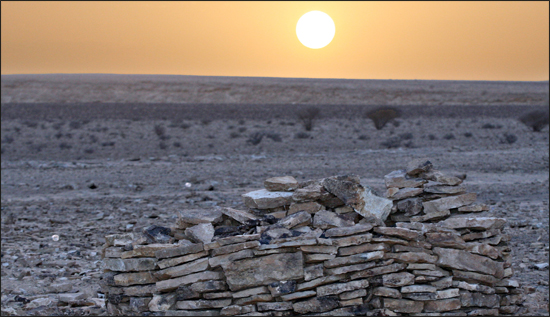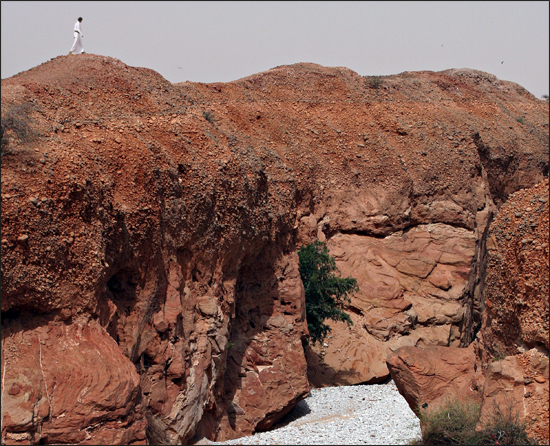 Cultural Heritage & Archeology
Yemen is often referred to as the cradle of Arab civilisation and evidence of mankind’s earliest existence can still be found there today. Indeed the archeological history of the country virtually parallels that of humanity. Prehistoric artifacts have been found in Yemen in the form of stone tools and hand axes which are associated with the early human species Homo erectus. The existence of this early form of old stone-age man can be traced back approximately two million years ago to the Oldowan period in the Paleolithic age. As man developed through the Stone Age and into the Bronze Age, Yemen has been able to provide archeologists with evidence of human evolution. Bronze Age burial tombs (commonly called cairns) and agricultural fields have been found, while pottery, coins and sculptures are examples of relics which have been excavated.
To help preserve the cultural heritage of the country, Yemen LNG implemented a robust Cultural Heritage Action Plan (CHAP) to ensure the protection of archaeological findings on or around its operational sites before, during and after construction, and in full compliance with the World Bank guidelines and Yemeni Laws on cultural heritage.
The company has also helped the relevant government authorities by documenting and, where applicable, preserving archaeological discoveries, including the Bronze Age and Iron Age Tombs as well as the historical settlement of Darbas, in cooperation with French and German archaeological institutions.
In October 2005, the company commissioned a comprehensive archaeological survey of the pipeline route which was undertaken by a joint team from the Centre Francais d’Archeologie et de Sciences Sociales de Sanaa (CEFAS) and the Deutsches Archaologisches Institut (DAI). In November 2005, DAI and CEFAS concluded that, while numerous archeological structures were identified during the survey, two were considered to have enough scientific significance to require specific and immediate action. The first consisted of a wide Hadramitic occupation (approximately second half of the 1st millennium BC) at the outflow of the Wadi Jardan called Darbas. The Darbas site, which was scientifically unknown until the Yemen LNG survey, consists of a settlement, an ancient field system and several irrigation structures. As a result and prior to construction activities, this site and in particular the irrigation system has been studied in detail. Of main interest was the function of the irrigation and field system, the dating of the site and the social and historical context of the complete ancient pattern.
A portion of the pipeline was re-routed to avoid the channel system. This project was entitled the ‘Pre-Islamic Settlement of Darbas’ project and it was fully financed by Yemen LNG.
The second archaeological project comprised several single tower tombs and three large cemeteries. Following the recommendation of DAI and CEFAS, a further archaeological study was performed entitled the ‘Bronze Age Tombs Project’. This was also fully financed by Yemen LNG. All archaeological fieldwork and excavation during the construction period was performed in co-operation with the General Organisation for Antiquities and Museums (GOAM). All findings have been preserved and submitted to GOAM according to the law and World Bank guidelines.
In respect of the Balhaf site on the coast, a number of Bronze Age structures were fully excavated, investigated, photographed and documented by Yemen LNG prior to construction activities. Findings have been preserved in liaison with GOAM and in accordance with the appropriate World Bank guidelines. In addition, Yemen LNG has undertaken systematic documentation of all historical buildings in the Balhaf bay – largely dating to the British colonial period of the 1930s.
During 2006-2008, a full time team of Yemeni archaeologists followed the pipeline construction to identify any features which require identification, preservation and recording. In this way, hundreds of sites have been identified, excavated, recorded and artifacts preserved in collaboration with experts from the Yemeni General Organisation for Antiquities and Museums (GOAM). A number of these have been exhibited at the National Museum in an exhibition funded and arranged by Yemen LNG in 2008.

An excavated Iron age tomb on the plateau near the pipeline route
 An Iron age man-made irrigation canal in Darbas near the pipeline route An Iron age man-made irrigation canal in Darbas near the pipeline route
|